When it comes to planning a trip to Fort Myers Beach, the water temperature can be a significant factor in making the most of your beach experience. Whether you’re looking to swim, snorkel, or just soak up the sun, understanding the local water temperatures can enhance your visit. Join me as we dive deep into everything you need to know about Fort Myers Beach water temperature, its seasonal variations, and some personal travel anecdotes that highlight the beauty of this coastal gem.
Understanding Fort Myers Beach Water Temperature
The water temperature at Fort Myers Beach varies throughout the year, influenced by seasonal changes and local weather patterns. Generally, the waters are warm enough for swimming from late spring through early fall, with peak temperatures typically recorded in July and August.
Monthly Water Temperature Averages
| Month | Water Temperature (°F) | Water Temperature (°C) |
|---|---|---|
| January | 66°F | 19°C |
| February | 65°F | 18°C |
| March | 70°F | 21°C |
| April | 74°F | 23°C |
| May | 80°F | 27°C |
| June | 84°F | 29°C |
| July | 87°F | 31°C |
| August | 86°F | 30°C |
| September | 83°F | 28°C |
| October | 79°F | 26°C |
| November | 74°F | 23°C |
| December | 68°F | 20°C |
Best Time to Visit for Warm Water
The warmest water temperatures are typically found between June and September, making this period ideal for swimming and water activities. I remember visiting Fort Myers Beach in July, and the water felt like the perfect bath—a refreshing escape from the summer heat.
Activities to Enjoy Based on Water Temperature
With varying water temperatures throughout the year, different activities may be more enjoyable at different times. Here’s a breakdown of what you can do:
Swimming and Snorkeling
During the summer months, the water temperature is fantastic for swimming and snorkeling. The vibrant marine life is more active, providing an unforgettable underwater experience. I once snorkeled just off the coast and was amazed at the variety of fish and coral formations.
Kayaking and Paddleboarding
As the water warms up, kayaking and paddleboarding become popular activities. The calm waters are perfect for exploring the coastline and nearby islands. An early morning kayak trip during Florida’s warm months is a serene way to start the day.
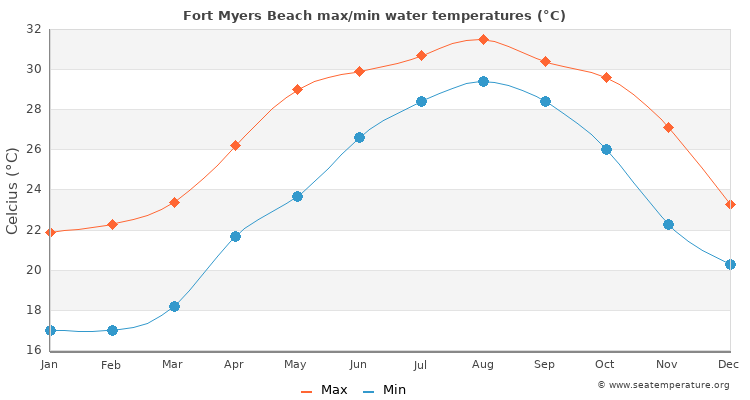
Surf Fishing
For those interested in fishing, the warmer waters attract various fish species, making it a prime time for surf fishing. I had a memorable experience catching a hefty snook right off the beach one warm afternoon; it’s a thrill that every angler should experience!
Understanding the Weather Influences
The water temperature at Fort Myers Beach is not only affected by the seasons but also by other weather factors including storms, humidity, and ocean currents.
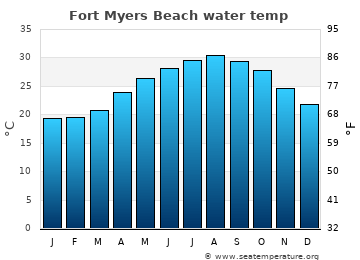
Seasonal Weather Changes
In summer, the combination of high temperatures and humidity can raise water temperatures significantly, making it feel more tropical. Conversely, winter months can see cooler temperatures driven by cold fronts. Depending on your preferences, this can either be a welcome relief or a chilly surprise!
Local Weather Patterns
Thunderstorms are common in the summer. While they may be short-lived, they can temporarily cool the water. Watching a storm roll in while sunbathing on the beach can be both exhilarating and awe-inspiring.
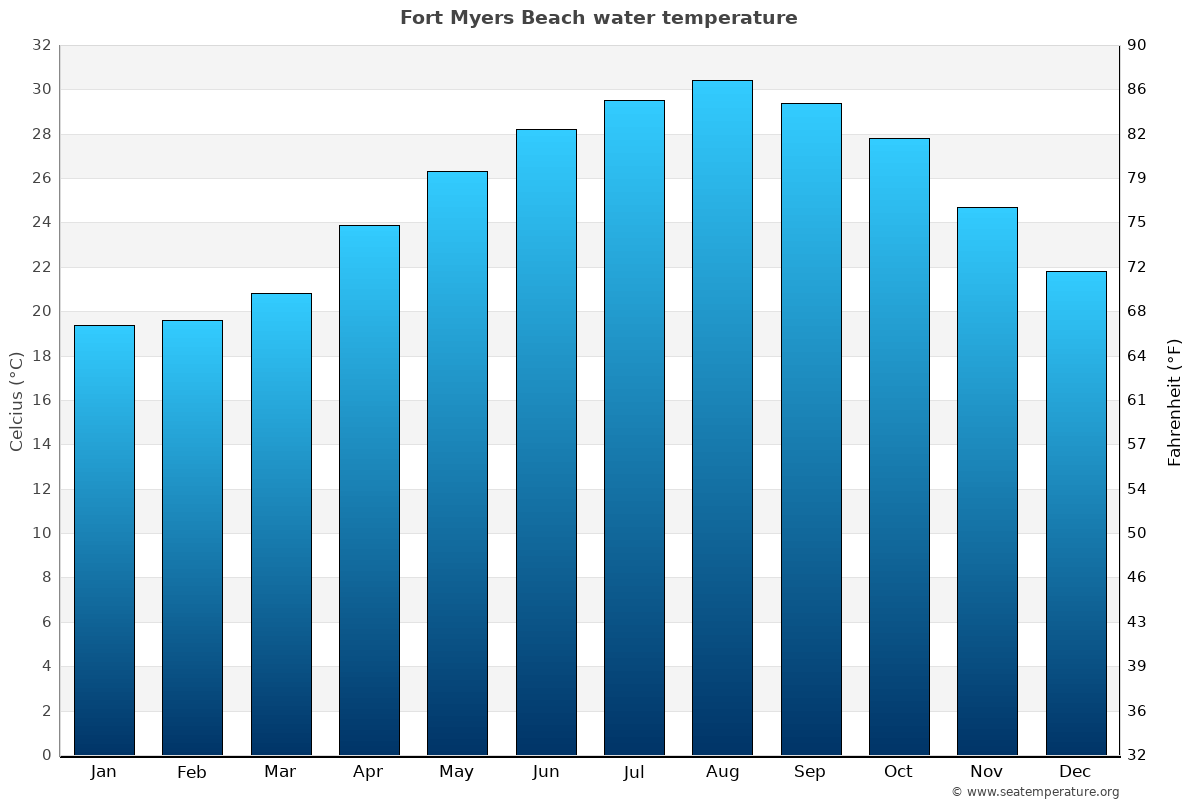
Travel Tips for Enjoying Fort Myers Beach
Here are some insider tips to help you make the most of your beach experience:
Timing Your Visit
If you prefer warm water, late spring to early summer is your best bet. However, if you enjoy fewer crowds, consider traveling in May or early June before schools let out.

Pack Accordingly
Don’t forget your sunscreen, hats, and light clothing for sun protection. Also, bring a light jacket for cooler evenings, especially during the winter months.
Safety First
Always check local weather advisories and beach flags for swim safety. Strong currents can arise unexpectedly, especially after storms.

Destination Highlights: Fort Myers Beach
Fort Myers Beach is not just about the water temperature; it’s a vibrant destination filled with activities and sights. Here are some highlights you won’t want to miss:
Fort Myers Beach Pier
The iconic pier is a great place to fish, people-watch, or catch a stunning sunset. I spent many evenings here, captivated by the brilliant colors reflecting off the water as the sun dipped below the horizon.
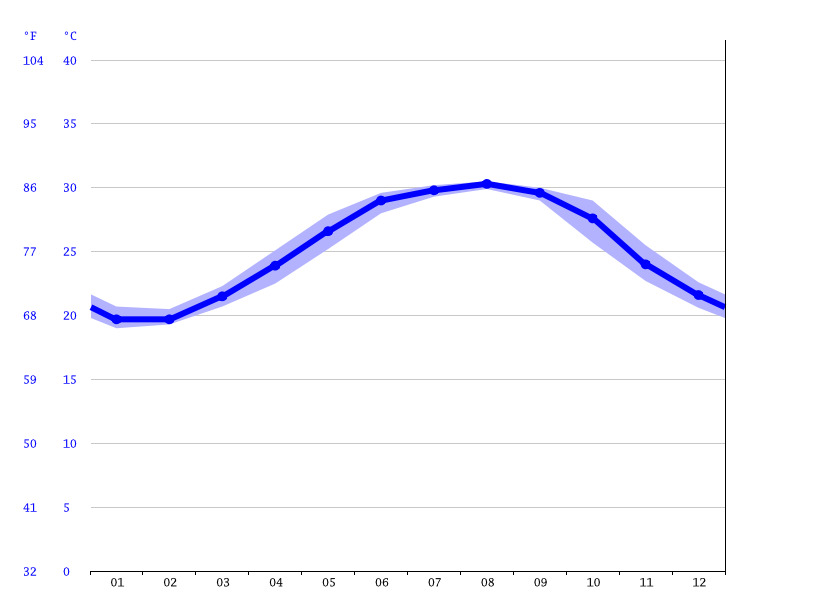
Lovers Key State Park
This serene park offers beautiful trails, kayaking, and the opportunity to see wildlife. I highly recommend a kayak tour through the mangroves—it’s a peaceful escape into nature.
Local Dining Experiences
After a long day in the sun, dining at beachside restaurants is a must. The fresh seafood and laid-back ambiance are perfect for winding down. My favorite is the local fish tacos at a nearby shack; they are simply irresistible!

Pros and Cons of Visiting Fort Myers Beach
Pros
- Warm, inviting water temperatures in summer
- A variety of activities, from watersports to fishing
- Beautiful beaches and stunning sunsets
- Rich wildlife and nature exploration opportunities
Cons
- Summer can be crowded due to tourism peaks
- Occasional storms and sudden temperature drops
- Accessibility challenges for some beaches
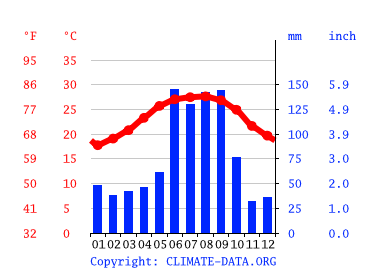
Frequently Asked Questions
What is the warmest month for swimming in Fort Myers Beach?
The warmest month for swimming is typically July, with an average water temperature of around 87°F (31°C).
When is the best time to visit Fort Myers Beach?
The best time to visit for warm water and fewer crowds is late spring or early summer, specifically May or early June.
Are there any dangers to swimming in Fort Myers Beach?
While the beach is generally safe, it’s important to heed local warnings regarding currents and wildlife. Always swim in designated areas and pay attention to flag warnings.